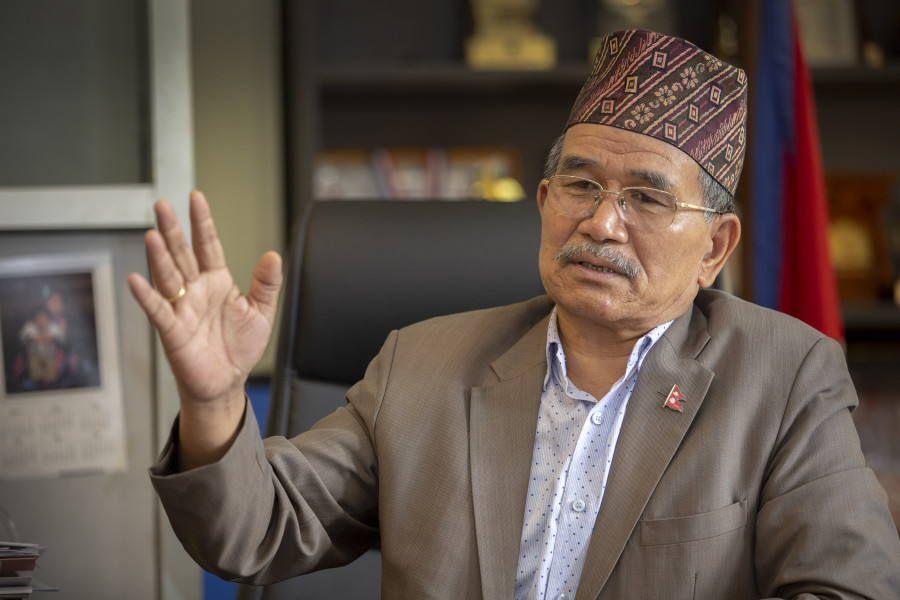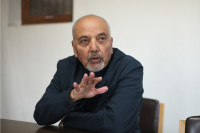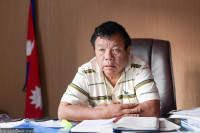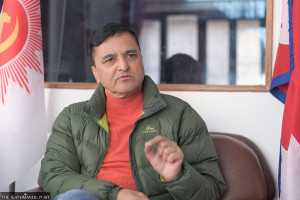Interviews
Chiribabu Maharjan: Lalitpur means the city of ‘fine art’, and we aim to preserve that
The Mayor of Lalitpur Metropolitan City on his promises and bold visions to right the wrongs since he took office.
In the two years since he was elected mayor for Lalitpur Metropolitan City, Chiribabu Maharjan has been taking some commendable decisions. Lalitpur City also unveiled Nepal’s first seed vending machine and has shown commitment to encourage the adoption of electric vehicles. Most recently, he inaugurated a 4.7 km cycle lane in Lalitpur riding his 33-year-old bicycle. The decision to establish the first cycle lane in the Valley has been hailed by cyclists and environmentalists. With exciting things happening on Maharjan’s watch, the Post’s Anup Ojha sat with the mayor to know about his vision for Lalitpur City.
This interview has been condensed for clarity.
It has been a little more than two years since you took office. How have things gone so far?
As the position of mayor had been lying vacant for 20 years, people have great expectations. Soon after assuming office, there were no acts in place for us to provide a blueprint as to how the local government is supposed to work. But the Local Governance Operation Act 2074, which came into effect in October 2017, provided a strong legal foundation to institutionalise the legislative, executive and quasi-judiciary powers of the newly-formed local government. That helped us move forward with our plans.
In my election manifesto, I had assured to install 600 smart street lamps in Lalitpur and build a 1.4 km fly-over between Pulchowk and Thapathali. I have been working to deliver on those promises. On Saturday, we inaugurated the building of a 4.7 km cycle lane in the Valley in Lalitpur. This will be expanded to other neighbouring municipalities up till Godavari Municipality. We are also working on formulating a Cycle Act to assure our citizens that cycling in Lalitpur is safe.
What about reconstruction efforts? What is the progress so far?
The first year was not satisfactory. In my second year, we were able to expedite the reconstruction of cultural heritage sites destroyed during the 2015 Gorkha Earthquake.
Over 85 percent of reconstruction work has been completed so far, but the progress of reconstruction projects awarded before the election has not been satisfactory. None of those projects have been successful. The reconstruction of the Bungamati Rato Machhendranath Temple, for example, was supposed to happen before the local election. But so far, only 36 percent work has been completed. Quality has been compromised, too. None of the four other temples awarded by the Department of Archaeology in accordance with the Procurement Act 2063 (2007) are doing well.
Learning our lesson, we have started reconstruction of the Bhimsen Temple in Patan at our own expense with the direct participation of locals. It’s going well. We are not going to take money from the government because if we seek the federal government’s help, we will have to follow the Procurement Act. This hampers our speed as well as the quality of the work.
Let's talk about infrastructure projects in the city and the noticeable changes you have made so far.
The reconstruction of public rest houses is going smoothly. Chyasal, for example, now has many beautiful public shades. The renovation of Pimbahal Pokhari is completed too. The city has allocated Rs25 million this fiscal year to preserve and revive historic ponds. We have completed stone paving in Patan Dhoka and its surroundings. Allocating Rs30 million, we are planning to construct six parks so that Lalitpur looks greener and has open spaces at regular intervals.
Lalitpur is known as a cultural city. How do you plan to preserve its unique culture and heritage for the next generation?
This year, Lalitpur became a member of Craft City under the World Craft Council. Lalitpur means the city of ‘fine art’, and we aim to preserve that. This city has both tangible and intangible heritage. It is a maze of narrow alleys interspersed with open spaces. Its architecture and sculpture are integrated into the lives of the locals. To preserve it, we started by reintroducing the Payo Jatra (sword festival) that was halted for over two decades. Lalitpur has also allocated Rs10 million for different types of training programmes so that traditional practices can be preserved for future generations.
Patan is also identified with many water spouts and natural wells. But most of them have already gone dry and are on the verge of extinction. Are there any plans to revive these water sources?
Since I am a native here, I grew up bathing in those water spouts. It saddens me when I see them go dry. There are 67 water spouts in Lalitpur, out of which only seven of them run water in small amounts. So, to revive them, the city has hired Prayag Raj, a water expert, as a consultant. The city is exploring options to revive them. If we are unable to restore the water spouts naturally, we will use an electric motor to recycle the gushing water.
Regarding wells, we have started giving Rs100,000 annually as an incentive to each ward on the day of Sithi Nakha—a Newar festival dedicated to cleaning water bodies. We are taking one step at a time and focusing on making plans that can be implemented.
How has the Lalitpur Metropolitan City worked to improve urban transportation?
To improve urban transportation, our city has acquired shares in Sajha
Yatayat worth Rs10 million, which will help them purchase semi-low floor buses. Sajha is already operating bus service from Bungamati in Lalitpur till Budhanilkantha in Kathmandu at the request of Lalitpur Metropolitan City. Now the route has been extended up to Godawari. Furthermore, Lalitpur Metropolitan City has also provided over Rs25 million to Sajha Yatayat to purchase electric vehicles.
Of the total 10.5 km of the Kalanki-Koteshwor road section, 7.9km falls under Lalitpur Metropolitan City. Police reports show over 1,000 accidents have taken place and over 27 people have already died on this stretch. As the mayor of the city, don’t you think you are obliged to take action to address this problem?
I am apprehensive about accidents in the area because it even lacks basic infrastructures such as zebra crossings, over-head bridges, dividers and street lamps. I even invited the Chinese Ambassador to Nepal, Hou Yanqi, to my office to request if anything can be done before the project was handed to the Nepal government. But she said it’s too late.
I have raised this issue in many meetings with higher officials at the central government and the Department of Roads. I am equally responsible for it because I don’t want anyone to die there. But the federal government does not let us work as we don’t have the authority to operate more than eight-metre-wide roads.
Sewage backflow is a significant problem in Patan. Recently, in May, four motorcycles parked in the Kwalkhu area were swept away. How will this problem be addressed?
This problem has endured for over a decade. We need experts to settle this permanently so we are currently coordinating with the Asian Development Bank (ADB) to open up international competitive bidding to lay drainage pipes along the 2.8-km stretch from Lagankhel, Kumaripati to Patan Durbar Square. ADB has granted us Rs540 million for the project. The work has been initiated, and next year onwards, people will not have to suffer.
Lalitpur is home to many Guthis, both private and public. But the government introduced a controversial Guthi Bill earlier this year which was heavily opposed by many, especially the Newar community. What are your thoughts?
This is a serious matter, and I object to the government proposed Guthi Bill. When the bill was first introduced in June, I had undergone surgery. Yet, despite the medical condition, I participated in the mass protest in Maitighar Mandala to support the local people. I belong to the Jyapu community; its population is around 32,000 in core city in Lalitpur. We have our own Jyapu Samaj. I represent them as well. All of the indigenous people have their Guthis regardless of their size and the property they hold. In that case, if the ordinance had been passed, all the assets would have converted into government assets. For example, Pashupatinath has the largest asset and the Machindranath has the second largest. All the guthi have their land, houses, temples, images, sculptures. Had the faulty Guthi Bill been passed, all tangible and intangible heritage would have gone. We would have lost everything.




 10.12°C Kathmandu
10.12°C Kathmandu











